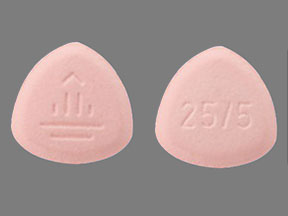
What is Glyxambi?
Glyxambi is a combination of linagliptin and empagliflozin. Both empagliflozin (oral diabetes medicine) and linagliptin (oral diabetes medication) help to control blood sugar levels. Empagliflozin helps the kidneys remove glucose from the bloodstream. Linagliptin regulates the insulin levels your body produces following a meal.Glyxambi can be used in conjunction with diet and exercise for adults with type II diabetes mellitus to help control blood sugar levels.Glyxambi can also be used to reduce the risk of death due to heart attacks, strokes, or cardiac failure among adults with type 2 diabetes and heart disease.This medication is not intended to treat type I diabetes.
Warnings
Glyxambi should not be used if there is severe kidney disease or diabetic ketoacidosis. It also shouldn't be taken if there has been a severe reaction to either empagliflozin or linagliptin.If you experience any of the following symptoms, call your doctor immediately: severe abdominal pain that spreads to your back; vomiting; rapid heartbeat; dizziness; feeling extremely thirsty or warmGlyxambi may cause severe infections of the vagina or penis in rare cases. Seek medical attention immediately if there is any burning, itching, or discharge, or if the area feels tender or red.
Before you take this drug
Glyxambi should not be used if:
- If you are living with severe kidney disease and currently receiving dialysis treatment, or are in dialysis yourself, please see your healthcare provider immediately for medical help and evaluation.
- If you have a history of severe skin or allergic reactions to empagliflozin, linagliptin, or both,
- Diabetic ketoacidosis (call your doctor for treatment).
Tell your doctor about any of the following to ensure that Glyxambi will be safe for you:
- Liver or kidney disease
- Bladder inflammation, or urination issues;
- A pancreas disorder;
- Heart failure;
- Gallstones;
- A genital infection, either penis or vaginal;
- Alcoholism or excessive alcohol intake could be signs that something else needs to change in your lifestyle.
- If you're on a diet low in salt,
- If you are over 65 years old,
- If you are planning a surgery,
- If you have high triglycerides or cholesterol,
If you're pregnant or plan to become pregnant, follow your doctor's advice about Glyxambi.Glyxambi should not be used during the second and third trimesters of pregnancy.Glyxambi should not be used while breastfeeding.
How to take Glyxambi?
Follow the directions on your prescription label and read all medication guides or instructions sheets. Please read the instructions on your prescription label. Sometimes your doctor will change the dose.Glyxambi can be taken with or without breakfast.You will need to check your blood sugar often and may need to test for ketones in your urine. Empagliflozin may cause ketoacidosis, which can be life-threatening (too much blood acid). If your blood sugar level is normal but a urine test reveals that you have high levels of ketones, call your doctor.Stress, illness or surgery, exercise, alcohol consumption, or skipping meals can all affect blood sugar levels.A low blood sugar may make you feel irritable or shaky. Eat or drink hard candies, crackers, or raisins to quickly treat hypoglycemia. In the case of severe hypoglycemia, your doctor may prescribe glucagon.You can become dehydrated if you have a prolonged illness. If you have diarrhoea or vomiting or are eating or drinking less than normal, call your doctor.Glyxambi may affect certain lab tests that measure glucose (sugar). Inform any doctor that you see about Glyxambi.Diet, exercise, weight management, and other medical treatments may be part of your treatment.Glyxambi should be stored at room temperature, away from moisture or heat.
Details on dosage
Adult dose of Glyxambi:
Initial dose: empagliflozin (10 mg) and linagliptin (5 mg) orally, once a morning.
For patients who tolerate the therapy, you may increase the dose to 25 mg of empagliflozin and 5 mg of linagliptin once daily.
Maximum Daily Dose for Empagliflozin 25 mg and Linagliptin: 5 mg per day.Comments:
It is not recommended for patients with diabetes type 1. It may increase their risk of diabetic ketoneacidosis.
Studies on patients with pancreatitis are still incomplete. It is unknown if patients with pancreatitis have an increased risk of developing pancreatitis while undergoing therapy.
When used with Insul or Insul secretagogues, a lower dose may be required to reduce the risk of hypoglycemia.
Uses:
As an adjunct to diet, exercise, and weight loss in adults with diabetes type 2,
Empagliflozin reduces the risk of death from cardiovascular causes in patients with diabetes and cardiovascular disease.
What happens if I miss the dose?
If you are almost due for your next dose, skip the missed one. Never take two doses of the same medicine at once.
What happens if I overdose?
Call 1-800-222-1222 immediately if you suspect being exposed to poisonous materials and need immediate medical assistance or contact 1-800-222-1222 for poison help or seek immediate medical care.
What should be avoided?
Avoid alcohol consumption.You could become dizzy if you abruptly stand up from sitting or lying position too quickly.
Side effects of Glyxambi
If you experience any of the following symptoms of an allergic reaction: hives; itching, flaking, or peeling of skin; difficulty swallowing; difficult breathing; swelling in your face, lips, or throat; or trouble breathing, seek emergency medical attention.If any of these symptoms appear, seek medical assistance immediately.The symptoms can get worse very quickly.
If you experience any of the following symptoms, stop taking Glyxambi immediately and contact your doctor.
- Pain and burning when you urinate
- A feeling of lightheadedness, as if you could pass out.
- Low sugar—headaches, sweating, and irritability.
- Heart problem: swelling, rapid weight increase, feeling of shortness of breath, or
- Dehydration: feeling of confusion, dizziness, and thirst; decreased urination.
If you experience:
- You may experience severe pain or persistent joint pain.
- Severe skin reactions—itchiness, blisters, breakdown in the outer layer;
- Ketoacidosis (too many acids in the bloodstream): nausea, vomiting, or stomach pain; confusion; unusual sleepiness; or difficulty breathing.
- Pancreatitis is a severe pain that spreads to the back and upper abdomen, along with nausea and vomiting.
Glyxambi may cause side effects such as:
- A bladder infection,
- Cold symptoms like a runny or stuffy nasal passage, sneezing, and a sore throat.
There may be other side effects. For medical advice on side effects, call your doctor. The FDA can be contacted at 1-800-FDA-1088 to report side effects.
Interaction with other drug
Other drugs can increase or decrease Glyxambi's ability to lower your blood sugar. Tell your doctor if you are taking any new medicines or if you will stop taking any of your existing medications.
- Insulin or any other oral diabetes medication;
- Rifampin is used to treat tuberculosis.
- A diuretic, or "water pill."
This list is incomplete. This list is not complete. This medication guide may not contain all possible interactions.




